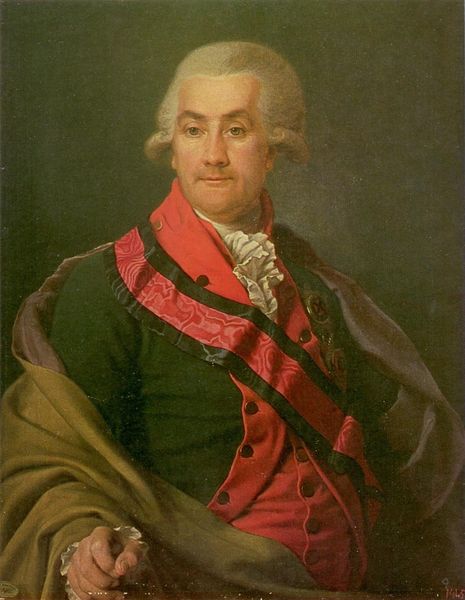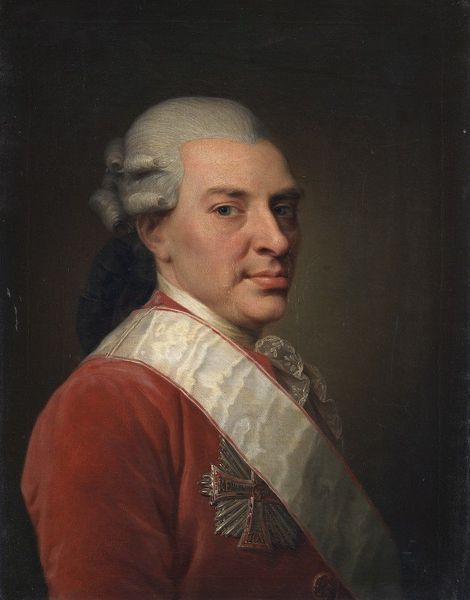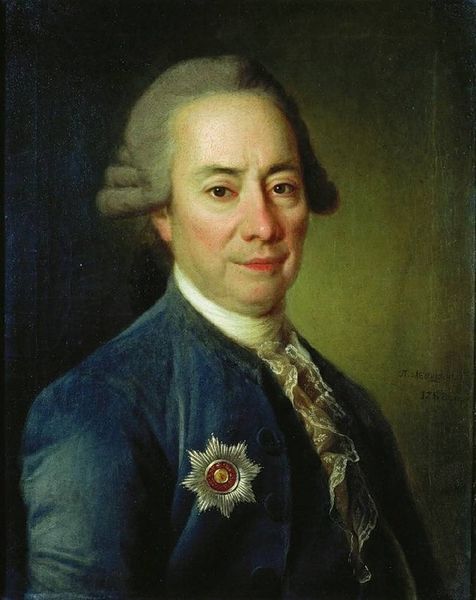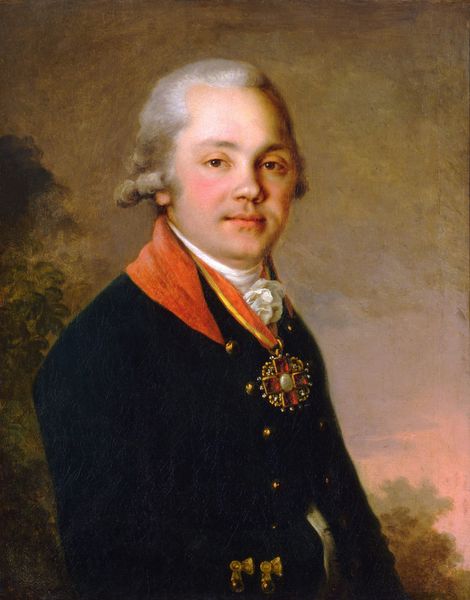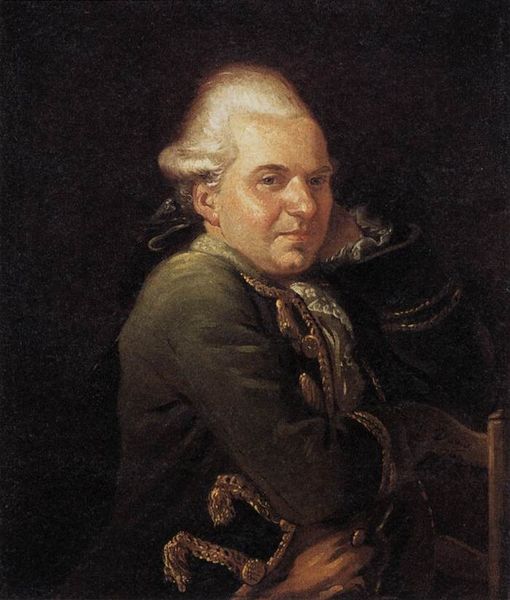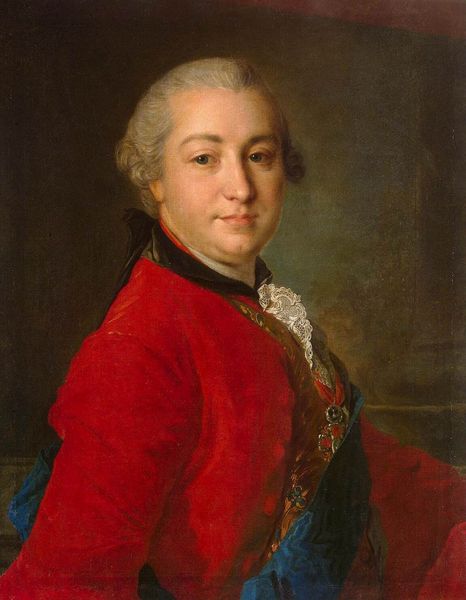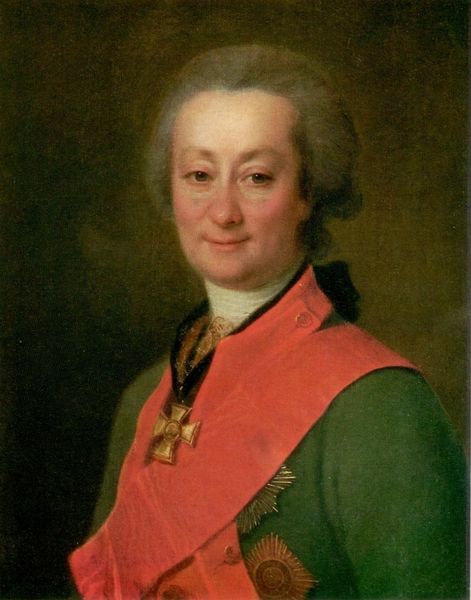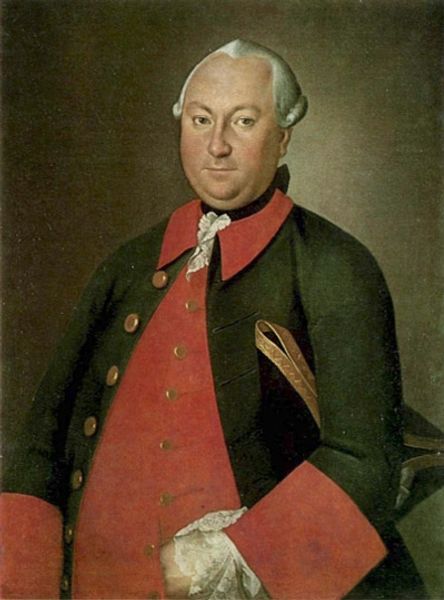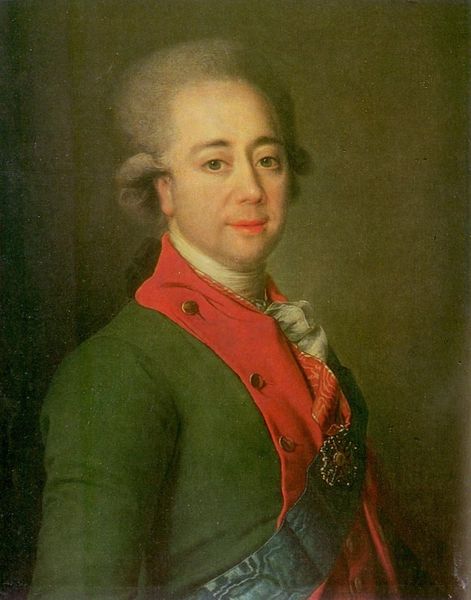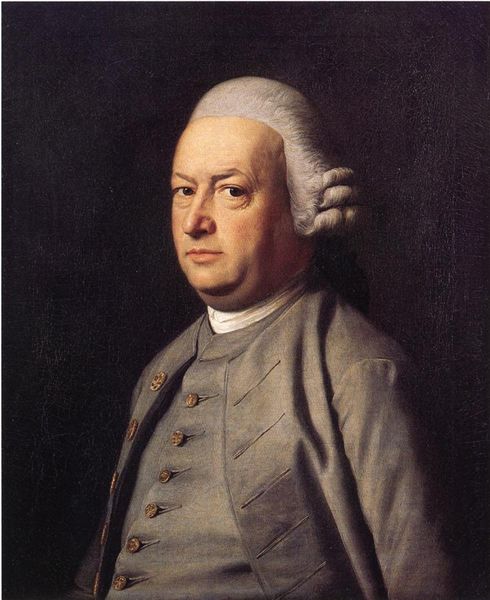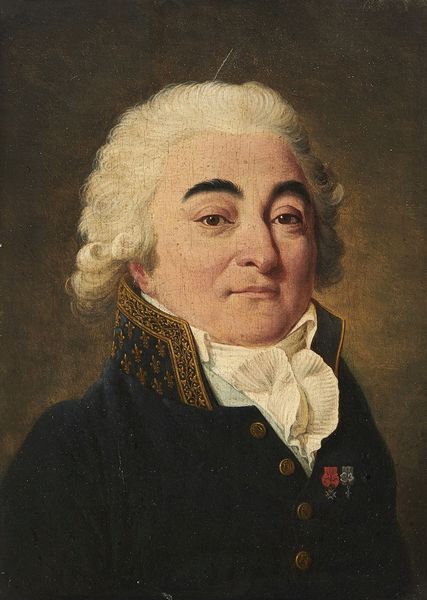
Copyright: Public domain
Curator: Let's spend a moment reflecting on this portrait by Dmitry Levitzky. Completed around 1780, this painting immortalizes Mark Fedorovich Poltoratsky, the director of the Capella. Editor: My first impression? Endearing! He has this slightly quizzical, almost shy expression that completely disarms the formality you'd expect from an 18th-century portrait. He seems kind of flushed, like he's just been caught singing in the shower. Curator: That flushed look may very well be intentional, actually! Portraiture of this era often aimed to capture the vitality and temperament of the sitter. This baroque style leaned heavily into depicting dynamism and inner character. Levitzky, in particular, was celebrated for capturing not just likeness, but the spirit of the individual. Editor: It's interesting, isn't it? How artists walk that line between capturing a likeness and crafting a persona. You can almost smell the powder on his wig and feel the texture of that beautiful, but rather loud, red jacket. But it's the eyes that grab me. He has such an honest gaze, doesn't he? There’s very little artifice there. Curator: Yes, there is something direct in his look. We have to consider that the Capella, which Poltoratsky directed, was a highly influential institution. It trained singers and musicians for the imperial court. As such, his image was intended to convey competence and convey sophistication, reflecting the values of the enlightenment and court culture of Catherine the Great. Editor: Values and power... always lurking, right? I still sense a human vulnerability that transcends the portrait's purpose. Perhaps Levitzky saw something beyond the director's official role. Curator: Perhaps he did. I find it endlessly compelling how art can reflect both the public role and the private self. Editor: Absolutely. And with portraits like these, we’re left to wonder who this person *really* was. It's a fun puzzle, piecing together history with intuition.
Comments
No comments
Be the first to comment and join the conversation on the ultimate creative platform.
